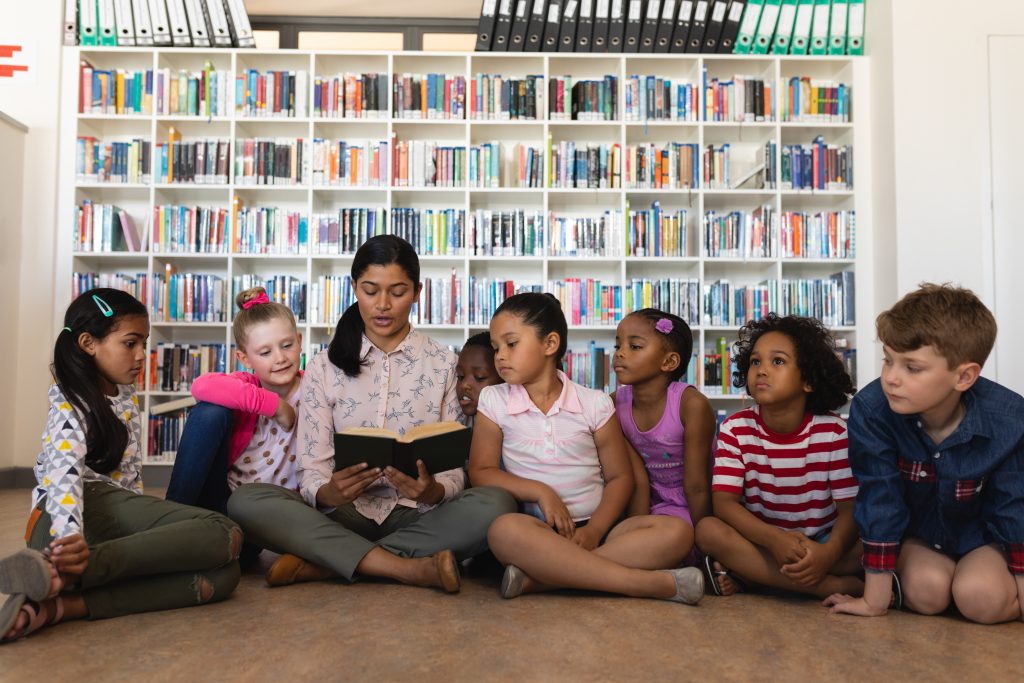Choosing a preschool is one of the most significant decisions you will make for your child’s early education. While factors like curriculum, location, and facilities are important, the most critical element often goes overlooked: the teaching team. These are the individuals who will spend hours each day with your child, shaping their first experiences with formal learning, social interaction, and personal growth. A truly great teaching team is more than just a group of adults; they are mentors, caregivers, and guides who build the foundation for a lifetime of learning.
The right teachers can transform a classroom into a vibrant, nurturing, and engaging environment. They have the power to ignite a child’s curiosity, instill a love for discovery, and help them navigate complex emotions. Conversely, a less-than-ideal team can leave a child feeling disconnected, insecure, or uninterested in learning. This blog post will serve as your ultimate guide, revealing the key qualities, qualifications, and characteristics that define an exceptional preschool teaching team. We will walk you through what to look for, the questions to ask, and the red flags to avoid, ensuring you make the best choice for your child.
The Foundation: Experience and Education
When you evaluate a preschool teaching team, the first things to consider are their professional backgrounds. While passion is essential, it must be supported by a solid foundation of knowledge and practical experience. Look for a team that demonstrates a deep understanding of early childhood development and the pedagogical strategies that work best for young children.
- Formal Education: Does the lead teacher have a degree in Early Childhood Education, Child Development, or a related field? While degrees are not the only measure of a great teacher, they often indicate a commitment to the field and a comprehensive understanding of educational theories and best practices.
- Certifications and Training: What continuous professional development does the team participate in? Look for teachers who have certifications in CPR, first aid, and specific educational methodologies like Montessori or Reggio Emilia. A team that invests in ongoing training shows a dedication to staying current with the latest research in early childhood education.
- Years of Experience: A team with collective experience is a major plus. Experienced teachers have seen a wide range of children and situations, allowing them to anticipate needs and respond with confidence and wisdom. Inquire about the team’s average tenure at the center, as low turnover often signals a positive and stable work environment.

The Core: Passion and Positive Attitude
You can’t teach passion, and it’s a quality that is immediately visible in a great teacher. Passionate educators are more than just employees; they are advocates for children who find genuine joy in their work. A positive attitude creates a welcoming and optimistic classroom atmosphere, which is vital for young children who are just learning to socialize and trust others.
- Enthusiasm for Learning: Do the teachers seem genuinely excited about the activities and lessons they are facilitating? Passionate teachers make even the simplest activities feel like a grand adventure. They use creative language and engaging tones that capture a child’s imagination.
- Positive Reinforcement: A great team focuses on building confidence through positive reinforcement. They celebrate small victories, acknowledge effort, and frame challenges as opportunities for growth. Instead of focusing on what a child does wrong, they guide them toward positive behaviors.
- Genuine Care and Respect: Observe how the teachers interact with the children. Do they get down to the child’s level to talk to them? Do they listen intently and show genuine interest in what a child is saying or doing? This kind of respect fosters a sense of security and self-worth in a young child.
The Art of Communication: Forging Strong Connections
Effective communication is the cornerstone of any successful relationship, especially between a teaching team, children, and parents. A great preschool team acts as a bridge, ensuring everyone is aligned and informed about a child’s progress and needs. This skill is critical for building trust and a collaborative partnership.
- With Children: Teachers must be able to communicate clearly and patiently with young children. This means using simple, age-appropriate language, giving clear instructions, and listening actively. They should be skilled at de-escalating conflicts and helping children verbalize their feelings.
- With Parents: An excellent teaching team keeps parents in the loop. They provide daily updates, whether through a digital app, a written note, or a brief conversation at pickup. They are also proactive in communicating any concerns about a child’s development or behavior and are open to feedback and questions.
- With Each Other: A cohesive teaching team communicates seamlessly. They share observations about children, plan lessons together, and support one another in the classroom. This collaboration ensures a consistent approach to a child’s care and education, even when teachers are rotating or absent.
The Classroom Environment: A Reflection of the Team
The physical and emotional environment of a preschool classroom is a direct reflection of the teaching team. A great team creates a space that is not only safe and clean but also stimulating, organized, and emotionally supportive. This environment is the third teacher, where children learn through exploration and interaction.
- Safe and Nurturing: A top priority is creating a safe space where children feel emotionally secure. A great team is observant, quick to comfort a child who is upset, and skilled at preventing conflicts. The physical space should be meticulously organized, with clear rules and routines that children can easily follow.
- Stimulating and Engaging: The classroom should be filled with opportunities for learning. Look for a variety of learning centers, such as a reading nook, an art station, a block area, and a dramatic play corner. These well-thought-out spaces encourage children to engage in different types of play and exploration, catering to various learning styles.
- Balance of Structure and Play: A great teaching team understands the importance of a balanced curriculum. They provide a predictable routine with structured activities like circle time and group lessons, but also ample time for unstructured free play. This balance allows children to learn important academic skills while also developing their creativity, problem-solving, and social abilities.
The Crucial Role of Child Development Knowledge
Exceptional preschool teachers possess a deep and practical knowledge of child development. They don’t just teach a curriculum; they understand the developmental milestones of the age group they serve and can tailor their approach to meet individual needs. This expertise allows them to provide the right level of challenge and support for each child.
- Recognizing Milestones: A skilled team can easily identify if a child is meeting typical developmental milestones in areas like fine motor skills, language, and social-emotional development. They know when to introduce new concepts and when to provide extra support for a child who may be struggling.
- Adapting to Individual Needs: Not all children learn at the same pace or in the same way. A great team can adapt their teaching style and activities to suit a child’s individual learning style and temperament. This personalized approach is what makes the difference between a good classroom and a great one.
- Emotional Regulation: The early years are a time of big feelings and limited coping skills. A teaching team with a strong understanding of child development can help children learn to identify and manage their emotions. They teach children to use their words, share, and resolve conflicts peacefully.

The Red Flags: What to Avoid
While looking for the best, it’s also important to be aware of the signs that a teaching team may not be the right fit. Observing these red flags can help you avoid a potentially negative experience for your child.
- Lack of Communication: If the teachers seem rushed, unwilling to talk, or fail to provide a summary of your child’s day, it’s a red flag. A lack of communication can lead to a breakdown in trust and an inability for you to support your child’s learning at home.
- High Turnover: Inquire about how long the teachers have been at the center. Frequent changes in staff can be disruptive to a child’s sense of security and their ability to form meaningful bonds. It can also indicate an unstable or unsupportive work environment.
- Unengaged or Unenthusiastic Staff: When you visit, observe the teachers’ energy levels. Do they seem bored, distracted, or more focused on their phones than on the children? A lack of enthusiasm can lead to a dull classroom and a less-than-optimal learning experience.
- Disorganized Classroom: While a classroom with young children will never be spotless, it should be well-organized and thoughtfully arranged. A chaotic or messy classroom can be a sign of a team that lacks structure or a clear plan, which can be unsettling for children.
Conclusion: Trusting Your Instincts and Making the Right Choice
Finding the right preschool teaching team is a journey that requires careful observation, thoughtful questions, and a little bit of trust in your own instincts. The team you choose will become an extension of your family, playing a vital role in your child’s development, happiness, and early educational success.
At Discovery Time Learning Center, we understand the immense trust you place in us. Our teaching team is composed of dedicated professionals who are passionate about early childhood education and committed to creating a safe, nurturing, and intellectually stimulating environment for every child. We invite you to see our teachers in action and discover the difference a truly exceptional team can make.
Ready to meet a team that is passionate about your child’s success?
Contact Discovery Time Learning Center today to learn more about our full-time, part-time, and drop-in daycare options in Alexandria, VA. We’re here to answer all your questions and help you make the best choice for your family.
FAQ Section
1. What is the ideal teacher-to-child ratio in a preschool?
The ideal teacher-to-child ratio varies by age group and state regulations. For two-year-olds, a ratio of 1:4 to 1:6 is generally considered good. For three-year-olds, a ratio of 1:7 to 1:10 is typical, and for four-year-olds, it’s often 1:8 to 1:12. A lower ratio allows teachers to provide more individualized attention, better supervision, and stronger support for each child’s learning and emotional needs.
2. How important is it for teachers to have a degree in Early Childhood Education?
While a degree is not the only indicator of a great teacher, it is very important. A degree in Early Childhood Education or a related field provides a teacher with a foundational understanding of child development, learning theories, and effective teaching methodologies. This formal training helps them create age-appropriate lesson plans, manage classroom dynamics, and support children’s cognitive, social, and emotional growth in a structured and informed way.
3. How can I observe a teaching team’s communication skills?
When you visit a preschool, observe how the teachers interact with each other, with the children, and with you. Do they seem to communicate effectively and respectfully with their colleagues? Do they get down to the children’s level and listen patiently? Are they able to clearly explain their classroom routines and curriculum to you? Ask about their communication protocols for parents, such as daily reports or parent-teacher conferences, to gauge their commitment to keeping you informed.
4. What questions should I ask the teaching team during a tour?
Asking specific questions can give you a deeper insight into the team’s philosophy and practices. Some questions to consider include: “What is your approach to discipline and behavior management?” “How do you handle a child’s big emotions, like tantrums or sadness?” “What does a typical day look like in the classroom?” “How do you communicate with parents about their child’s progress?” “What kind of professional development do you receive?”
5. Why is a low staff turnover rate important?
A low staff turnover rate is crucial because it provides children with a sense of stability and security. Young children thrive on routine and consistent relationships. When teachers remain at a center for a long time, they develop strong bonds with the children, understand their individual needs, and create a predictable and comforting environment. High turnover can be disruptive and make it difficult for children to form the secure attachments necessary for healthy development.
{ “@context”: “https://schema.org”, “@type”: “FAQPage”, “mainEntity”: [ { “@type”: “Question”, “name”: “What is the ideal teacher-to-child ratio in a preschool?”, “acceptedAnswer”: { “@type”: “Answer”, “text”: “The ideal teacher-to-child ratio varies by age group and state regulations. For two-year-olds, a ratio of 1:4 to 1:6 is generally considered good. For three-year-olds, a ratio of 1:7 to 1:10 is typical, and for four-year-olds, it’s often 1:8 to 1:12. A lower ratio allows teachers to provide more individualized attention, better supervision, and stronger support for each child’s learning and emotional needs.” } }, { “@type”: “Question”, “name”: “How important is it for teachers to have a degree in Early Childhood Education?”, “acceptedAnswer”: { “@type”: “Answer”, “text”: “While a degree is not the only indicator of a great teacher, it is very important. A degree in Early Childhood Education or a related field provides a teacher with a foundational understanding of child development, learning theories, and effective teaching methodologies. This formal training helps them create age-appropriate lesson plans, manage classroom dynamics, and support children’s cognitive, social, and emotional growth in a structured and informed way.” } }, { “@type”: “Question”, “name”: “How can I observe a teaching team’s communication skills?”, “acceptedAnswer”: { “@type”: “Answer”, “text”: “When you visit a preschool, observe how the teachers interact with each other, with the children, and with you. Do they seem to communicate effectively and respectfully with their colleagues? Do they get down to the children’s level and listen patiently? Are they able to clearly explain their classroom routines and curriculum to you? Ask about their communication protocols for parents, such as daily reports or parent-teacher conferences, to gauge their commitment to keeping you informed.” } }, { “@type”: “Question”, “name”: “What questions should I ask the teaching team during a tour?”, “acceptedAnswer”: { “@type”: “Answer”, “text”: “Asking specific questions can give you a deeper insight into the team’s philosophy and practices. Some questions to consider include: \”What is your approach to discipline and behavior management?\” \”How do you handle a child’s big emotions, like tantrums or sadness?\” \”What does a typical day look like in the classroom?\” \”How do you communicate with parents about their child’s progress?\” \”What kind of professional development do you receive?\”” } }, { “@type”: “Question”, “name”: “Why is a low staff turnover rate important?”, “acceptedAnswer”: { “@type”: “Answer”, “text”: “A low staff turnover rate is crucial because it provides children with a sense of stability and security. Young children thrive on routine and consistent relationships. When teachers remain at a center for a long time, they develop strong bonds with the children, understand their individual needs, and create a predictable and comforting environment. High turnover can be disruptive and make it difficult for children to form the secure attachments necessary for healthy development.” } } ] }


